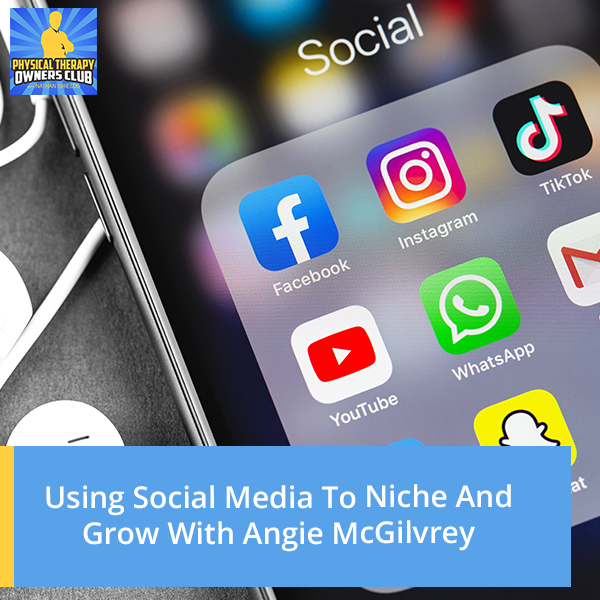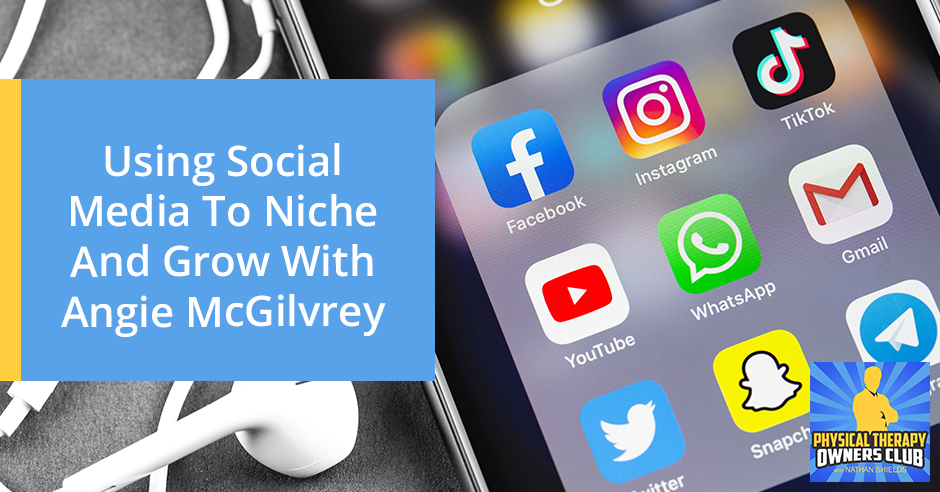
Angie McGilvrey, PT of Apex PT had the opportunity, after a hurricane shut down her clinic in Florida for a prolonged period (sound familiar?), to revamp her clinic and create her ideal scene. One of the things she committed to when she opened back up was greater usage of social media to market her clinic and attract her ideal clientele – female athletes between 30-40 years of age. By focusing targeted messaging to her avatar on a couple of social media platforms and posting content consistently, she has been able to not only grow her clinic but see more of the clients she wants to see. Plus, she’s created a reputation as being THE place for athletes to recover in her community. She’s been able to niche down and grow because of it.
—
Listen to the podcast here:
Using Social Media To Niche And Grow With Angie McGilvrey
I’ve got a fellow friend and HODs or Hands-On Diagnostics owner with me, Angie McGilvrey, out of Florida. She and her husband, Joe, own Apex Physical Therapy in two locations. I want to bring her on because she’s done a lot of great work in growing her practice and has used social media to do a lot of that work. I want to get into her story to share what she’s done on social media and how it’s been successful for them. First of all, Angie, thanks for coming on. I appreciate it.
Nathan, thank you for having me.
Before we get into the social media stuff, you’ve been an owner for many years, so congratulations. You’ve got multiple practices and you guys have been successful. I’m sure the story hasn’t been sweet-smelling roses all the time. To give everybody a little bit about your journey, do you mind sharing your professional story quickly?
My husband, Joe and I, opened Apex Physical Therapy in 2005. We packed everything we owned up in U-Haul. We were from Chicago and said, “We’re going to Florida. Forget this cold weather. We’re going to give this whole PT private practice a try.” We are blessed to be here growing and being productive many years later.
Have you been in the profession for a while? Had you been practicing for a while before you decided to open your clinics?
We did. We were practicing underneath other owners for about five years before we decided to take the leap.
Did you practice in that area in Florida first and then open up your clinic? Or did you go to Florida and decide we’re going to open from scratch?
We opened from scratch, cold turkey.
That takes some courage. You had some confidence and I’m sure you hit the bushes. You worked and marketed hard, all that good stuff. I’m sure you’ve pushed hard and it’s part of your success. Are there any particular times along the way that were somewhat hard on you that turned out to be a learning experience and a success in the end?
Yes. I would say two large things come up. The first one being in Florida, we have a high Medicare population. I can’t recall the year right off hand, but we went through a Medicare audit one where they put us on 100% prepayment review, which meant that in order for us to get paid by Medicare, they had to review all of our documentation first on 100% of our patient volume. I did learn how to document for medical necessity.
Florida got hit with that, didn’t they? It’s a Florida thing.
Unfortunately, there are some fraudulent things that happen. Secondary to that, everybody was looked at with high scrutiny. I am proud to say that we came out of that on the other side, but it is a huge learning experience and something that made me a lot stronger in understanding medical necessity, billing, coding, documentation and all those things that as PTs, we don’t sometimes want to care about, but I figured out fast why we have to care about it.
Social media, strategically utilized, instantly puts you in front of your ideal patient without dealing with a physician's referral Click To TweetHow long were you under review?
It lasted about six weeks until we finally were able to get off of 100% and down a different percentage. We had to work with an attorney and all the things. It was rough.
How far into your ownership was that?
I believe it was about 8 or 9 years in.
You are going strong, but that’s a huge roadblock in the middle.
Medicare was our payer, like 75% of our population, especially the season is Medicare. This was a big undertaking.
That was number one. Did you have a second one?
My second one was in 2017. We were hit with Hurricane Irma and that was a big deciding point and a big pivotal point, which leads us into the conversation that we’re having around social media in the sense that we chose after Irma to rebuild our practice. One of those building blocks that we used was growing and niching through social media.
Did you have to close down your clinic for a period of time?
We did. We had some damage. We had no power for about ten days in the entire Florida, which was 90% of our patient population left and evacuated. Even if we would have power and been ready to operate the day after, none of our patients were here. Everybody was gone. The whole state had been evacuated, especially in our area. That was a scary time to figure out how do we get through this. I do have to say with the COVID pandemic that we’ve all been dealing with, Hurricane Irma was the best thing that I could relate it to and figure out, “What did we do then to navigate?” Our practice went down to almost nothing. How do we use that experience to navigate through COVID? I’m grateful for them looking back because I know that they contributed to our successes.
It’s not uncommon. As I’m working with clients or talk and interview people over the years, it’s tough to go through those hard experiences and you wouldn’t wish them on people or yourself, but after having done so you come through having learned so much and having grown stronger. In your case, you were able to create a different practice than what you went into Hurricane Irma with. That’s relative nowadays, even with the pandemic. That was a lot of push over the pandemic as I talked to people on the show and my clients. It was like, “Here’s an opportunity. It sucks, but how can we make the most of it? What can you do so that you can make the changes in your clinic to reflect what you want in your clinic? Who are the clients that you want to see? Who are the fellow team members you want to work with? Are you seeing the paramix that you want to see? Do you have policies and procedures in place that make things easier? Do you have time set aside for admission or tests?” I could go on and on, but taking advantage of these opportunities is what makes us stronger. It gives us opportunities in the face of challenges. As you did that, how did you then work social media to your advantage to create what you wanted? I would love to know what you did, why and what were some of the instigating factors? What was your clinic like before to what did it become?
The clinic was very much a general outpatient orthopedic, physical therapy practice. It has no different than any other outpatient orthopedic. If you looked out the window, it would look like all of the others.
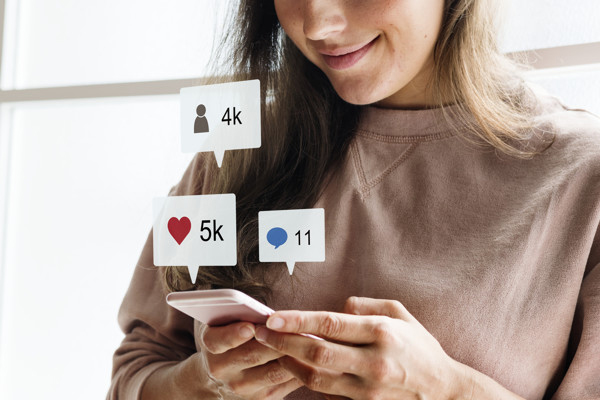
We take all comers, whoever has got a script, we bring them all in.
We take them all, we do it all, we market to everybody, we take all the insurances. We do everything. We market 75% of the time to referral sources, mostly physicians and those others in the medical community. That’s what we looked like going into Hurricane Irma coming out on the other side. One of the biggest things that the storm taught us was that, as you said, we have the ability to create change. We have the ability to reset this practice to what it is that we ultimately wanted to be. We wanted it to take more control and be more at the cause of the specific patient we were working and identifying our avatar. Also, be at cause at bringing those patients into the clinic without having to rely on a third party referral source. That’s where social media started coming into play for us big time.
Social media is something that I wish I had more time to do that. Did you think about that in the past or was this something that forced your hand into, “How are we going to take advantage in social media came to mind?”
It was more the latter. I’ve never had my own Facebook, Instagram, Twitter, nor Pinterest. I was the person who fought social media for a long time until I started listening to a mentor who I’ve used in, Gary Vaynerchuk. I have to give him credit for what I’ve done and what I’ve learned through social media. I started to learn that if I wanted somebody’s attention and especially my avatar’s attention, I had to go where they were and they were on their phones. More specifically, they were on social media. I was like, “Angie, you better get your butt on social media.”
What’s your avatar?
Our avatar is the 30 to 40-year-old female athlete, specifically the CrossFit athlete.
You’re CrossFit as well. Are you performing CrossFit athlete yourself and Joe?
Yes.
You can speak their language, you know what they’re dealing with, you know the moves and the lifts, and some of the common injuries that go along with being a CrossFit athlete. That’s exactly where you live in that space and it’s easy for you then to talk to those people I assume.
Yes.
It’s a little counterintuitive to what I heard and that was to create where you live and that is, if you’re on Facebook all the time, create a lot on Facebook. If you’re on Instagram all the time, create a lot on Instagram. Maybe there’s something to that, but you had to learn how to navigate and use some of these social media accounts. Was that a tough learning curve? Was that hard for you to adopt? Has it become easier for you?
It’s like anything else in life, you have to start doing it. That was it. I had to start doing it. Joe was always involved with it on a small level, but it was when I decided that we had to put a ton into this and I wanted to be that driving force. I had to learn by doing. The first 500 posts that I made, it’s like a therapist, the first 500 backs that I treated didn’t do that great of a job, but the more we do, the more we learn. It’s the way that it goes in. I still am learning all the time and I’m trying different things, seeing what captures attention, what is giving more value and what do people respond better to. It’s a work in progress.
People want to do business with people. Click To TweetTo get into the weeds a little bit, are you using your own personal account or is it an Apex PT account that you’re using on these platforms?
It is a business account. My practice is a small business and our philosophy is much that mom-and-pop small business family feel. We have in two locations. We know our patients and we develop meaningful and lifelong relationships with them. We infuse a lot of Angie and Joe’s story, Angie and Joe’s history and some personal things with Angie and Joe in there because people want to do business with people. That’s what we’ve done.
How much time are you setting aside to do all these posts and get your stuff out on social media?
As a team, there are three of us that do this, myself, Joe, and one other gentleman in my practice. Between us, we can talk about what I mean by working, but this is working. The entire part of working social media, we do 5 to 6 hours a day collectively between the three of us.
You’re each doing a small portion, at least an hour or two. When you’re talking about that, you’re talking either you’re creating video or content, you’re editing, posting a video in some form or another.
That side of it, but then also there’s the other side of it and the engagement side.
Tell me about that.
We work from two different angles. It’s the content creation and the posting, and then also the customer engagement. We will go through and literally either search through the #CrossFit or #Fitness or something like that. We’ll see the accounts that pop up and you go on and somebody posts something and you comment on their posts. We’re engaging in two-way conversations with that avatar patient of ours. Sometimes this person could be across the country. You never know what that brings because maybe that person from across the country says, “Let me give you a follow.” They follow you. They see something cool you’re doing. They post it and maybe they’ve got 100,000 followers and all of a sudden, you’ve got the attention to somebody down the street. With what technology has done in the way, it opens up our market so big to who we can create conversations and engage with and get our product out in front of them. It’s not limited to our 10-mile radius like we used to think.
A Gary Vaynerchuk thing to do is to get engaged on all those hashtag groups and throwing your two cents and then people follow you and it cross-references each other. It sounds familiar. Do you use any gadgets to help you along the way with a few accounts and platforms running? Are you using something to help you out?
I tried to dabble in Hootsuite for a little while, which is a platform that lets you do all of the pre-programming and setting. It wasn’t fitting for me. I know there are other people that use that, I don’t. We post to the date, to the moment like, “What is happening?” I’m like, “Look inside the clinics.” That lends itself to doing it on the fly sometimes.
If I see something on your posts, more than likely it’s been done sometime in the last 24 to 48 hours, and it’s not something that was done a week ago that was scheduled to post at a certain time, which Hootsuite will do for you.
Sometimes that does happen. We do have some scheduled content to create like, “I want to do some videos around musculoskeletal ultrasound. Let’s make sure we get those videos.” The majority of it is me and/or others in my clinic being followed by a video camera. The way that I get my content is I have a videographer that follows me about 4 to 6 hours a week. Based on that, he creates content off of the rides me working with my team, working with our patients doing our thing. It’s extremely authentic. It’s not like, “Let’s sit down and let’s rehearse what we want to say about this.” It’s seldom that we do anything like that.

What platforms are you on? To follow up, is that something you filter down to certain platforms after starting on a bunch or have you stayed on all of them? Where did you start and where are you now?
We started with simply Facebook because that’s the largest out there. However, when you start to look at some of the demographics, my avatar spends the majority of their time on Instagram. I do both. We put the majority of our stuff on Facebook and Instagram. I also do a personal page and an Apex page on LinkedIn, where I will reuse a lot of the same content or videos, but I would spin the messaging a little bit more knowing that I’m talking to another physical therapist or somebody savvier in my space versus talking to the general public about physical therapy.
In LinkedIn, you’re talking to business professionals typically, and that’s what they’re looking for business-related stuff. You’re sharing your story and what you’re doing and I’ve seen many of your posts on LinkedIn and you do a great job. Do you also do stuff related to physical health and caring for certain injuries? That’s a lot of what I don’t see on your LinkedIn stuff. I’m wondering if you massage your content on Facebook and Instagram for injuries and diagnoses in particular as you’re talking to your avatar.
Facebook and Instagram stuff is a lot more about like the last post I did. I was doing a contract relaxed technique with a runner’s hip, but it was all talking about my youngest runners with hip pain, this is why it happened and this is what we do about it. It is basic.
You have a videographer, but for a guy who’s maybe a smaller clinic size and treating quite a bit, when you first got started, was it simply you and Joe and an iPhone essentially?
We would be on the iPhone and we would be going throughout our day. I would look across the clinic and I would see a patient doing cool exercise and be like, “Let me pull my phone out.” Video fifteen seconds of that exercise, knowing that later, I’ll post that and talk about what they’re doing. I have a patient come in that I would have one of my CrossFitters. We were working on with the PVC pipe working on a lift and I’d say, “Let me video her or video me. I’m going to post that later.” It was not until within 2019 that I started having the videographer be with me.
Do you get consent from your patients to post those videos? Is that something that’s part of the intake paperwork or do you let them know verbally ahead of time that this is going to get posted?
Yes, we have a video image release as part of our standard paperwork. On the days that he is there filming, they see that he’s walking around or whatever, and I always make it a point to be like, “Is it okay that we get some of this on video?” I make sure I get that extra okay any time I do work with minors that are athletes as well. I always reask verbally mom or dad again to make sure everything is good. The cool thing about getting their consent and doing that is I make it a point whenever I’m posting about a certain athlete or there in my video to build that person up into talking about how they’re inspiring this post and this is how awesome they have done.
I’m proud of them because that gives them a huge amount of value and self-esteem coming back at them. It’s turned into, “That’s cool. Apex posted my video.” It makes them feel good about themselves and their progress and that piece of it I love. Being able to tag them and say that is amazing for them. On the other side, it also drives business for us because then they will typically repost it with, “Thanks Apex. You guys are awesome or whatever.” Not that I’m looking for that, but when it happens, that’s wonderful and I’m grateful for them to do that.
It’s cool on two levels that you get to highlight these amazing people that come through your clinic and share how awesome they are because it’s not all about Apex all the time. If you read, Building a StoryBrand, we are the guides in their hero story. The patient or us as we’re looking at someone who can help us, we are the hero of our own story. We’re looking for the guides to help us be better. That’s what you’re able to show in those videos. It’s nice that you get some turnaround because these people who are more than likely your avatars are going to post on their websites to other avatars of yours with the people in your network that you would be able to treat as well. It’s such a cool concept that you highlight them so much because a lot of what you see with PTs is, “This is what you do for your back. These are the stretches. Here’s the anatomy.” That’s not engaging. When you see other athletes performing, getting treated, exercises that they’re doing, that’s somewhat engaging because you pulled into a little bit of a story there and that’s cool.
I try to tell a little glimpse of each of their story, like, “She had this and now she has this. That’s why we’re working on this.” It brings it to real life.
Don’t you use YouTube?
Friends and family are always huge referrals. Click To TweetWe do, but I need to be better at it. I was told by a digital marketer that it becomes the second search engine behind Google. We need to become better at YouTube.
We got into the weeds there a little bit. You made it intentional to use social media to your advantage and grow in a different way than you were before. How has it changed your clinic by niching down and using social media?
It’s been awesome. The two pain points that we went into Hurricane Irma with were marketing to the physician as well as seeing anybody and everybody. I treat two days a week. I love treating. If I choose to treat. My entire schedule that is all I treat. I treat is athletes and most of them are CrossFit athletes, but it has blended into, “If she knows how to CrossFit and she knows how to treat Spartan racers, and she does CrossFit and Spartan Race then I know she can help me because I am a baseball player.” That’s amazing as well as my practice has been branded in our area as the place for athletes to go, which is super cool.
I’ve heard that from various physicians in talking and communicating. We are having a PA or a physician say something to a patient and the patient comes and tells me, “They told me because I golf and I need to get back to golfing. I’m an athlete so I need to go to Apex because that’s where the athletes go.” To hear that is super rewarding. It has completely flip-flopped our marketing. We market 80% now direct-to-consumer and 20% of it is massaging the relationships and the rapport that we have built over the past years with the various medical people in our community.
To be honest, the coolest flip of the table is when I have a CrossFitter who hurt her wrist doing a lift, doing a clean. She bent her wrist all the way backward and was like, “This is bad news.” The way she contacts us is she direct messages us through Instagram. I want that to be a point there in that this opens up a new line of communication for people to get it. She didn’t go to our website. She didn’t call our number. She direct messaged us on Instagram and said, “Can you help me?” I was like, “Yes, come in today at such and such time and we’ll help.” That’s huge. She came in and talks about what was happening with her wrists and the other.
We ended up doing an MSK or Musculoskeletal Ultrasound to look at her wrist. We’re super concerned. I didn’t do the MSK. It was my husband’s ball. I can’t remember exactly what his major concern was, but he had one and he said, “You need to hang on a second. We’re going to get you to the orthopod. You do need to be screened by an orthopedic before we go any further because I’m concerned about it.” He text messages in orthopod that we have a great rapport with, “I have an athlete here needs to see you.” He’s like, “Send them over at whatever time.” We fed the orthopod the patient versus buying the $700 lunch and begging for patients. The patient went to the orthopod and was cleared. Everything looked good. She came back to us and did rehab a couple of visits. We had her right back to doing CrossFit and she was super grateful and blessed. Her turnaround was within two weeks that we had this whole process wrapped up, had her back doing her thing. That is the power of that social media connection because she follows us on Instagram.
That goes to show the value and the power behind a direct to consumer marketing. It’s something that I was pushing for during the shutdowns of the pandemic is we can’t rely on referrals sources anymore. This is an opportunity for us to change our marketing patterns and go direct to the consumer because that’s where more of the people are. What is often the touted stat? That only 10% to 15% of the people that have musculoskeletal injuries get to physical therapy. That means we’re fighting for 10% as we’re going to physicians when there are 90% of the people out there who need us. As you’ve changed your marketing, has it significantly changed your numbers in terms of the types of patients that you see? You said you were 70% Medicare. Are you still at 70%?
No, which is fantastic. In the beginning, I complain about having the risk in Southwest Florida of a Medicare audit. That was a basket that we didn’t want to put all of our eggs in. In the heart of our busy season, we do have where all of our snowbirds come down from January to April. We ride about 60% to 65% Medicare. Outside of the season, those numbers dropped significantly to maybe 40% to 50% at the most. We’ve been able to change that demographic and diversify that payer mix.
You’ve been purposeful about it. Thus, where do you get a majority of your patients from? I don’t know if you knew your numbers beforehand, maybe 95% of your patients came from physician referral. How has that changed by using social media and whatever else you’re using? How many patients do you get from physician referral now compared prior to the hurricane?
I’m going to say pre-COVID because a lot of things changed with that. I would say that from a physician referrals standpoint and in just that small percentage of massaging those relationships, those things didn’t change all that much. Friends and family have always been a huge referral pattern for us. That has always been above 50% of our referrals that has held there significantly. Between social media and us going to actual PR events and going straight to the consumer marketing directly to them, whether that be at a gym, a CrossFit box, community events. Before when you could have a race or a CrossFit competition that has boosted up into close to 20% of getting that specific that people are coming into our practice.
This is an additional revenue on top of what you are already getting.
We have to not think about what happened with that, but pre that, we were on a tear. I’m grateful to where we’ve bounced back. We’re in a good place but we were going into that season.
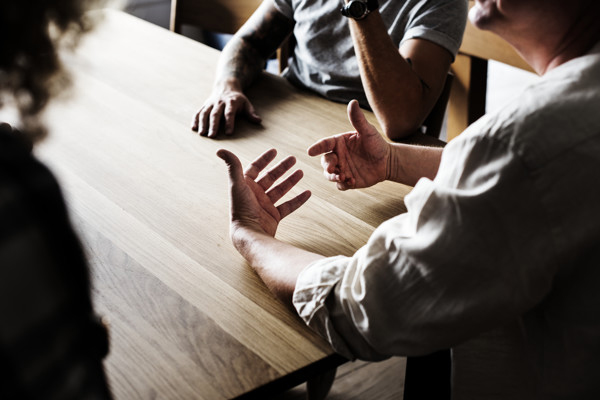
I think there might be a fear out there that if an owner is going to start niching down, that they are going to do so at the sacrifice of the other patients that know, like and trust them. Did you find some of that or did you find that this is simply expanded your scope by niching down?
That was my worry in the beginning. I thought the same way. I thought I only niche and market to this specific 30 to 40-year-old female CrossFit athletes like, “What the heck am I doing?” It expanded my practice. I realized number one, we did have a strong foundation of friends and family, to begin with. That foundation was key. I also think that in doing that and being able to serve that avatar person and serve them so well, they will still recommend their brother, sister, mom, dad, their grandma or grandpa, the other person at the gym. They’re going to become your ambassador even more so. The CrossFit athlete has been my avatar, but I would say my schedule, I have with school season and track season starting, half of my schedule is full of cross-country runners.
You might not have seen these people before in the past.
My entire schedule would have been 65 and older Medicare.
Has that also affected your recruiting and the PTs that you’ve brought on board? Do you have a different type of PT that works with you now?
One of the taglines or hashtags that we use is #AthletesTreatingAthletes. Putting somebody in that space and recruiting a PT or a PTA to treat that caseload, they need to be like me from the standpoint of they live in that world. They talk that talk, they are an athlete, they understand injury, the pain and the mental of, “I’m injured and I can’t play. I can’t perform.” They’ve been there. That’s hugely important.
You not only niched your patient load, but you also niched your team members.
That’s true.
Some of the successful PTs I know out there like Sturdy McKee, he’s got a practice in San Francisco. They won’t hire a PT that hasn’t played a team sport before. He thinks and their philosophy is that, “If you played a team sport, then you know how to work well with other people to be productive and achieve a goal.” That’s one of their criteria. You might not necessarily have people on there that do CrossFit, but they need to be athletes. Is there anything else you want to share about niching down and how it’s benefited you and your practice? You have shared a ton of great information already.
Coming from my story in 2015, it was the PPS Conference. I don’t know if you were there Nathan, but we did the PPS Conference in Orlando. Gary Vaynerchuk was one of our keynotes. At that point, he asked everybody to raise their hand if they have Facebook. I was one of the five people in the room that didn’t raise their hand because everybody had Facebook. I looked around and I was like, “I’m proud of this. I don’t need that stupid Facebook. That’s a waste of time.” To go from being that person to now seeing how powerful and utilizing this tool, it goes to show that if I can do it and use it to niche and build my practice, anybody can. Anybody that wants to do it and has the intention to do it, you can do it.
It takes work and you have to set aside time specifically for it. If you don’t, it’s going to easily fall through the cracks of your “busyness.” I’m sure you schedule the time, make sure you hit it every day. It’s about consistency when you’re talking about social media.
It is my habit.
When you're putting stuff online, just give value and entertain people. Click To TweetDo you post every day or do you post three times a week? What’s your schedule?
If I count Instagram, Facebook and LinkedIn separately, including posts and stories, we do close to 100 posts in a week. I would like to even do more, but we didn’t start that way by any means. This is building. We started with one post a day to multiple and multiple people doing it and posting stories and all of that.
It is cool to see how you’ve grown and used social media to your advantage as an owner, especially among physical therapy owners. I don’t think that’s utilized as much. Our profession is usually about a decade behind everyone else, so it’s cool to see how you’ve used it, and thanks for sharing. If people wanted to follow you, what are some of your social media addresses?
Instagram is @ApexPhysicalTherapySWFL and Facebook is Apex Physical Therapy. Those are the two places that are the best to find us. It’s Apex Physical Therapy on LinkedIn or me as Angie McGilvrey on LinkedIn as well. Thank you.
Is there anything else you want to share with us, Angie, before we sign off?
When you’re putting stuff on there, give value and entertain people. That’s what I try to do is give them as much value, think about what they want and entertain them. That’s what has made it successful on my end.
It doesn’t seem like they necessarily want to know all about physical therapy and every injury. I’ve had clients who have posted pictures of sunsets and I’ve gotten more engagement from the picture of a sunset than they did about anything else they posted. It’s funny how it works. Thanks for your time and for sharing. Congratulations on the growth and all the great things that you do. I love seeing your posts on LinkedIn. They’ve been motivational and inspirational. It’s awesome to see how you’re using it to your advantage.
Thank you, Nathan. It was such a pleasure to be on. I appreciate you.
Important Links:
- Hands-On Diagnostics
- Apex Physical Therapy
- Building a StoryBrand
- Sturdy McKee
- @ApexPhysicalTherapySWFL – Instagram
- Apex Physical Therapy– Facebook
- Apex Physical Therapy – LinkedIn
- Angie McGilvrey – LinkedIn
- https://APEXPTFlorida.com/
About Angie McGilvrey
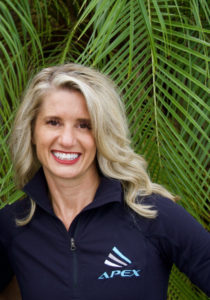 Physical therapy and fitness is my passion! Leading my team at Apex, we empower athletes of all ages and levels to move better, feel better, and live better!
Physical therapy and fitness is my passion! Leading my team at Apex, we empower athletes of all ages and levels to move better, feel better, and live better!
Love the show? Subscribe, rate, review, and share!
